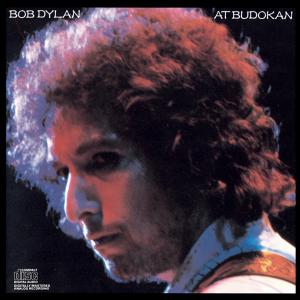
At Budokan (1979)

Disc One
1. Mr. Tamborine Man
2. Shelter From the Storm
3. Love Minus Zero/No Limit
4. Ballad of a Thin Man
5. Don't Think Twice, It's Alright
6. Maggie's Farm
7. One More Cup of Coffee (Valley Below)
8. Like a Rolling Stone
9. I Shall Be Released
10.Is Your Love in Vain?
11.Going, Going, Gone
Disc Two
1. Blowin' in the Wind
2. Just Like a Woman
3. Oh, Sister
4. Simple Twist of Fate
5. All Along the Watchtower
6. I Want You
7. All I Really Want To do
8. Knockin' on Heaven's Door
9. It's Alright, Ma (I'm Only Bleeding)
10.Forever Young
11.The Times They Are A-Changin'
Recorded during his 1978 tour of Japan, At Budokan represents one of Bob Dylan’s most polished and stylistically divergent live offerings. Unlike the raw dynamism of Before the Flood or the intimate spiritual intensity of his later gospel-era performances, this album captures a meticulous, brass-laden reinvention of Dylan’s repertoire—an interpretation that polarized critics and fans alike.
Drawing heavily from the sonic landscape of Street Legal, Dylan reimagines his earlier works through the lens of late-70s pop-rock sheen: tight horn arrangements, flutes, backing singers, and a distinctly polished band. The result, for many longtime followers, was a bewildering departure. Where fans may have hoped for the stark, poetic minimalism of Blonde on Blonde, they were greeted instead with carefully choreographed renditions filtered through smooth jazz and theatrical soul. It was, for some, Dylan at his most alien.
Yet, to dismiss At Budokan on these grounds alone is to miss the quiet radicalism of the performance. Dylan—never one to rest on past laurels—had long since cultivated a reputation for artistic defiance. From going electric at Newport to embracing Christian gospel in the 1980s, reinvention was his norm. That he dared apply this philosophy to his greatest hits, and in such an overtly stylized fashion, is perhaps more in keeping with his ethos than it first appears.
Admittedly, the album does at times feel overly cautious. The arrangements are smooth to the point of sedate, and Dylan himself sounds uncharacteristically grounded—sober, even. His between-song banter is friendly but pedestrian; the elusive mystic is, for a moment, a working musician doing his job. And yet, there’s something refreshing in that candor. The vocals, though far from his most expressive, are steady and sincere. The band, for all their flash, is tight and professional.
Retrospectively, At Budokan offers a curious charm. Songs like Shelter from the Storm or Like a Rolling Stone are reinterpreted with enough difference to demand attention, but enough care to justify their existence. No, they do not replace the originals, but nor are they meant to. They are reinterpretations—Dylan’s reflections not as he was, but as he had become in that moment.
As Dylan’s first double live solo album, it occupies a strange, liminal space in his discography: neither canonized nor reviled, and too slick to be truly iconic. And yet, it endures. Not because it captures Dylan at his most powerful, but because it captures him at his most enigmatic. In its own strange way, At Budokan is essential: not as a pinnacle, but as a turning point.
Go back to the main page
Go To Next Review